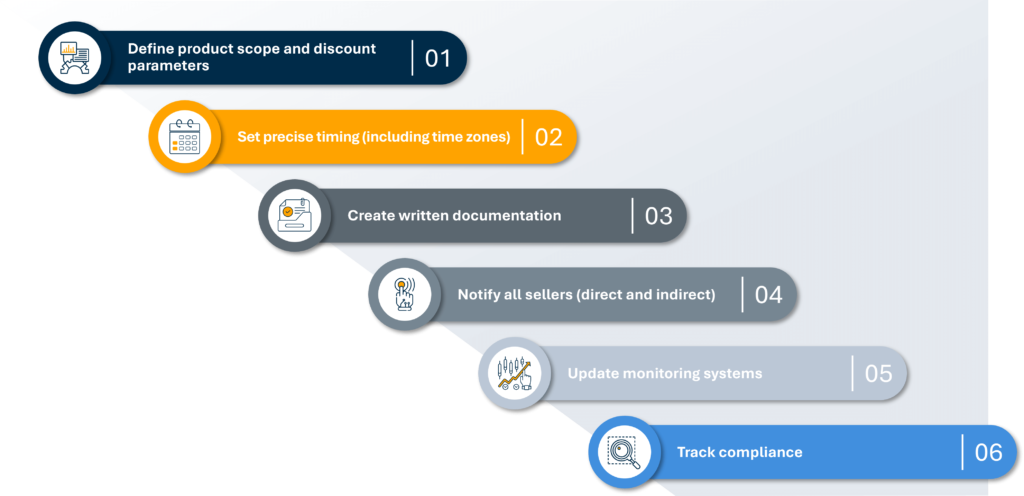
In today’s competitive retail landscape, maintaining advertised pricing integrity while staying competitive during peak shopping seasons can be challenging for brands. Enter MAP holidays—a strategic tactic that allows brands to temporarily modify their Minimum Advertised Price (MAP) Policy without compromising long-term advertised pricing strategies.
MAP holidays are temporary deviations or waivers during strategic periods when brands can enable their authorized sellers to advertise products at modified advertised prices without such advertising being a violation of the MAP Policy. These strategic windows often align with significant shopping events like Black Friday, Cyber Monday, or seasonal clearances.
Brands typically implement MAP holiday sales in one of two ways:
The brand announces specific promotional periods that deviate from the MAP Policy (generally preferred)
Authorized sellers choose their holiday periods within brand-set parameters, set forth in the MAP Policy (generally has drawbacks)
Major retailers may announce promotional periods with minimal notice, so brands should be prepared to:

Successful implementation of MAP holidays relies on having a set strategy supported by proactive management. Brands should document their MAP Holiday terms in writing, supported by precise schedules that outline both regular MAP prices and holiday adjustments. This proactive approach will ensure a successful holiday period and a successful conclusion.
As eCommerce evolves, brands must balance advertised pricing integrity with market competitiveness. MAP holidays provide a structured approach to achieve this balance while maintaining strong relationships with authorized sellers. For further MAP insights, check out our series, 20 Things to Consider When Preparing a MAP Policy.
Want to discuss the implementation of MAP holidays or your brand’s unique needs? Download our quick reference and email Jessica Cunning directly or contact us below to schedule an initial call.